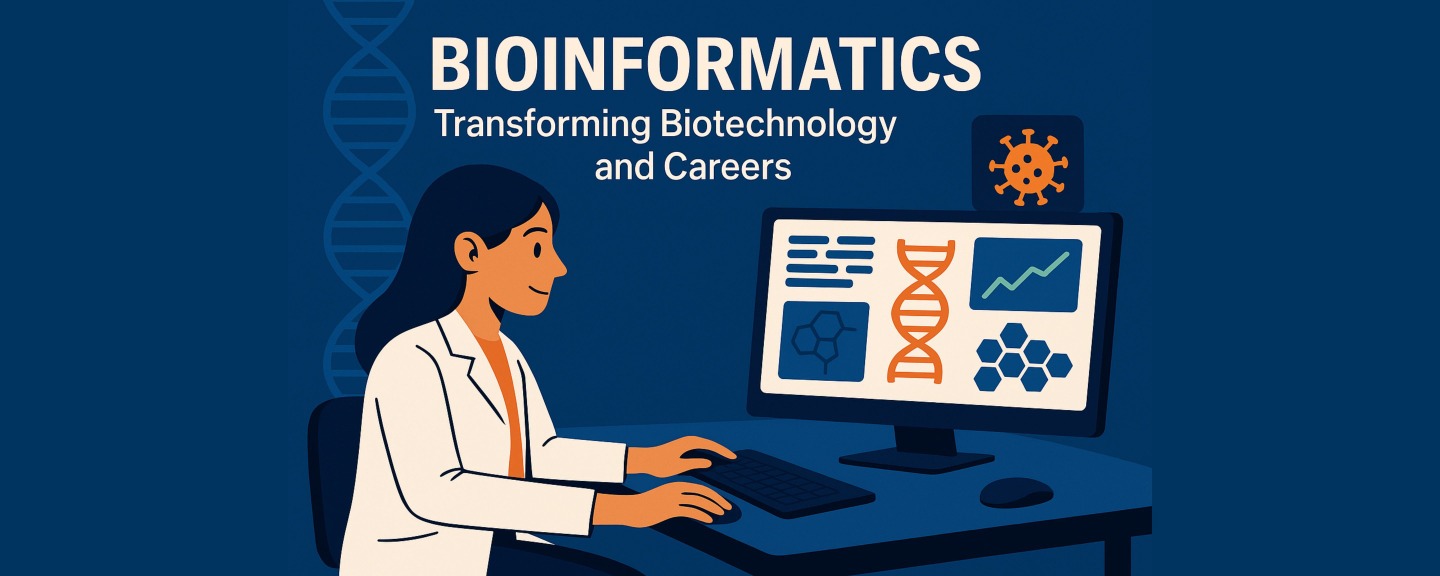There are no items in your cart
Add More
Add More
| Item Details | Price | ||
|---|---|---|---|

You might have heard a lot about bioinformatics but aren't exactly sure what it is or what kind of jobs it offers. Simply put, bioinformatics is a field that combines biology, computer science, and mathematics to analyze and interpret large-scale biological data.
What is Bioinformatics?
Have you ever wondered how scientists manage to decode complex genetic information or quickly find cures for diseases? The answer lies in a fascinating field called bioinformatics. Simply put, bioinformatics merges biology, computer science, and mathematics to decode the secrets hidden in our genes and biological data.
Let’s understand this through simple yet exciting stories:
Genetic Disease Diagnosis: A Personalized Medical Revolution
Imagine a young child struggling with a rare, unknown disease. Doctors can’t pinpoint the cause. Enter bioinformatics: by analyzing the child's genetic data—essentially, their DNA sequence—scientists quickly identify the exact gene causing the disease. This allows doctors to develop a personalized treatment plan, specifically designed for the child’s unique genetic makeup, dramatically improving their health and quality of life.
Drug Discovery: Speeding Up the Cure
Picture pharmaceutical researchers racing against time to find a cure for a deadly disease. They need to understand how certain proteins behave to create effective drugs. Bioinformatics tools, like DeepMind’s AlphaFold, help scientists predict the 3D shapes of proteins with incredible accuracy. This technological leap dramatically speeds up drug development, enabling medicines to reach patients faster.
Agricultural Improvements
Farmers face the challenge of growing more food while battling pests and diseases. Using bioinformatics, scientists analyze genetic data from crops to identify traits for higher yields, better nutritional quality, and resistance to pests and harsh climates. This breakthrough ensures abundant harvests, improved food security, and sustainable farming practices.
These are just three exciting examples, but bioinformatics has a wide variety of applications, which we will keep exploring in upcoming blogs. But for now, let’s start with this small read!!
In our next blog, we’ll showcase innovative companies leading the bioinformatics revolution and share practical tips on how students can pursue exciting careers in this thriving field. Stay tuned for insights on making your mark in bioinformatics!